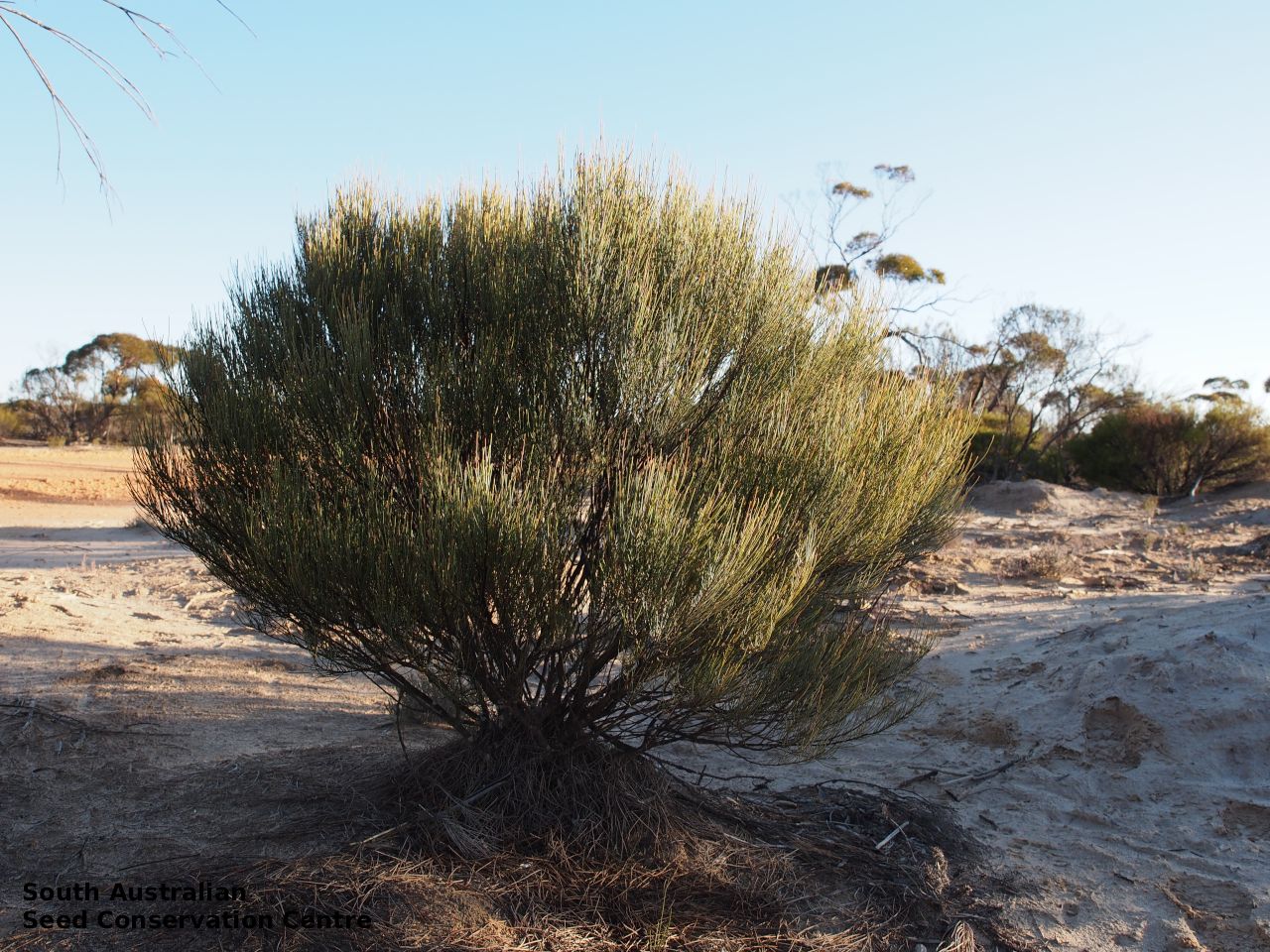
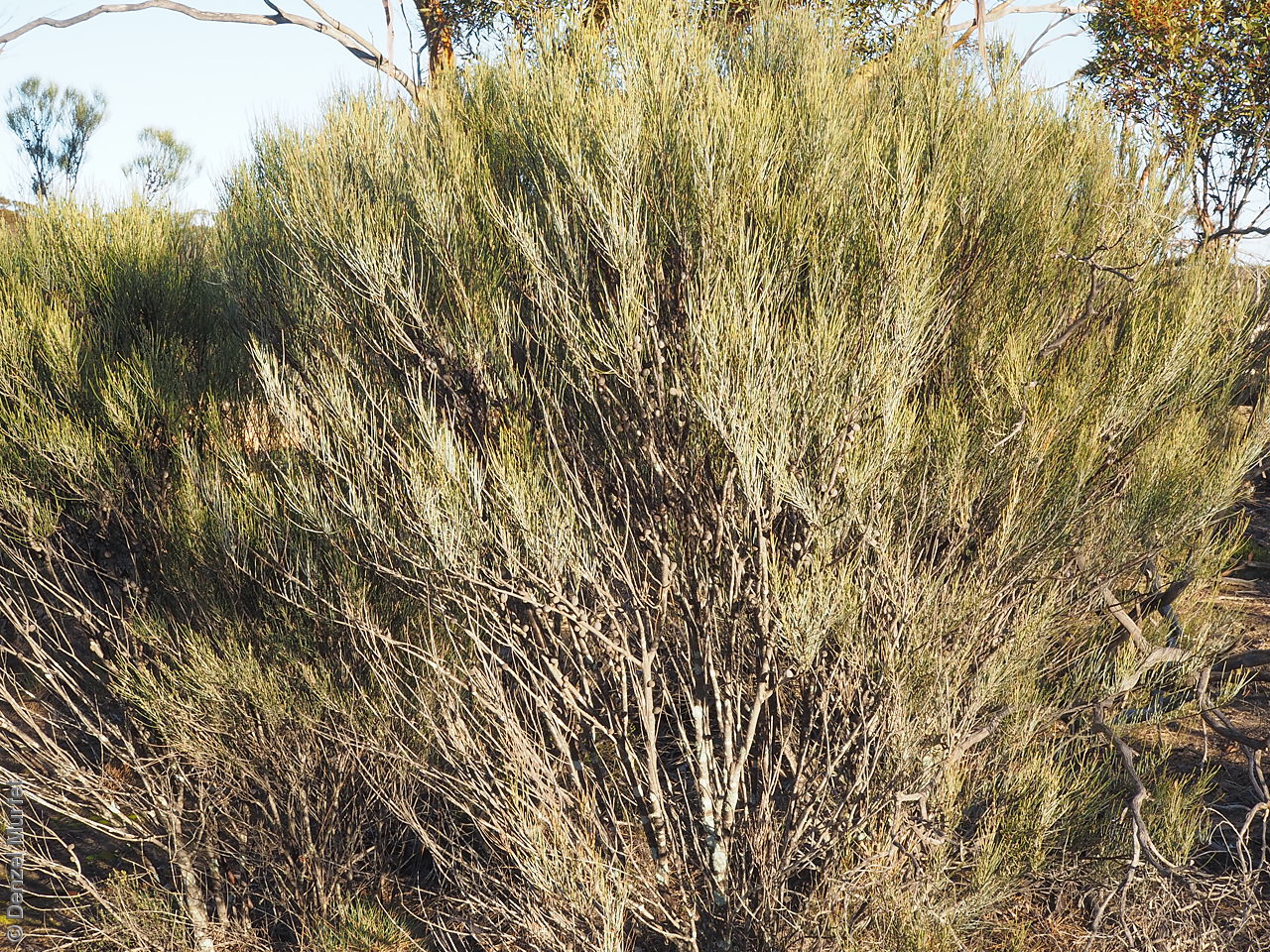

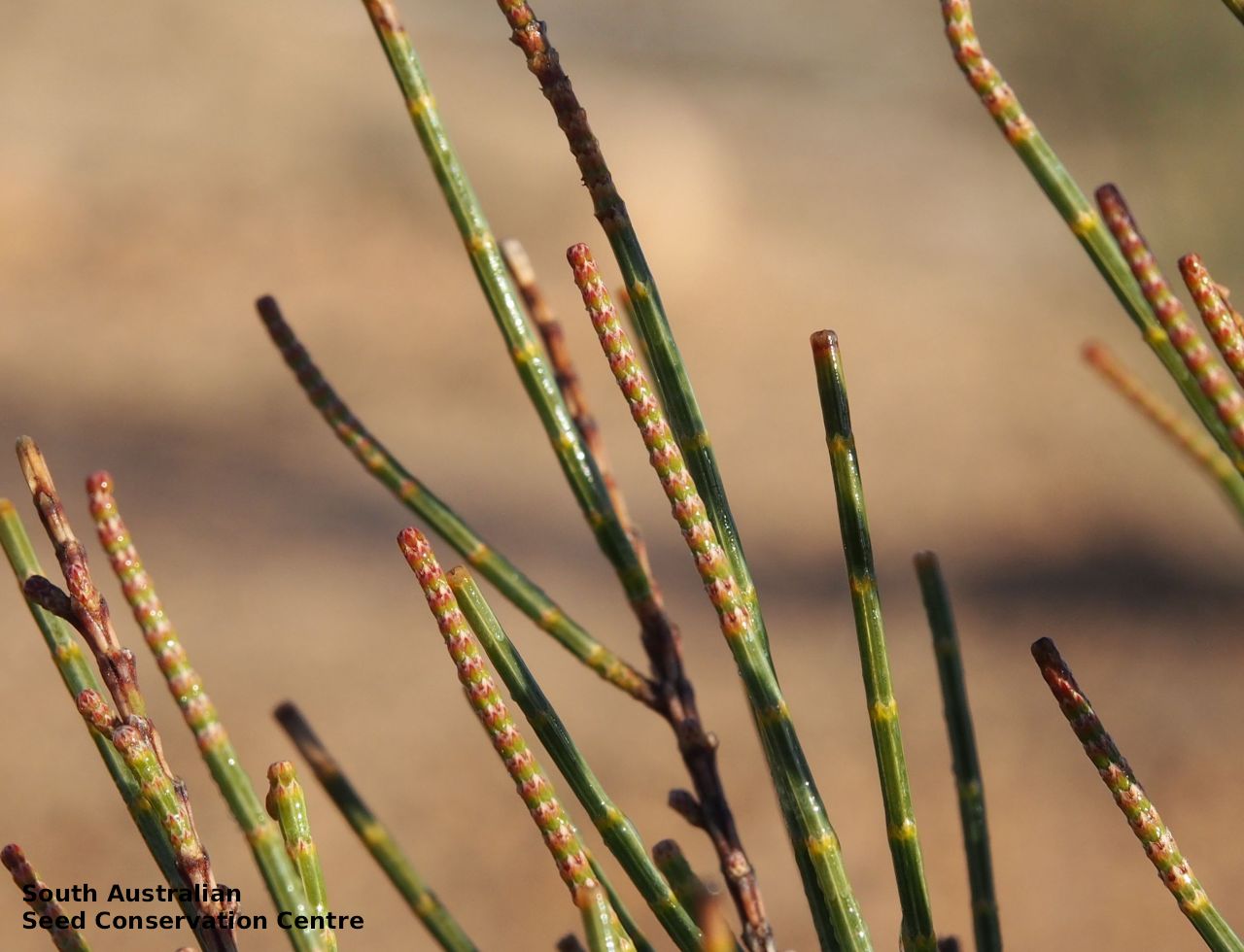




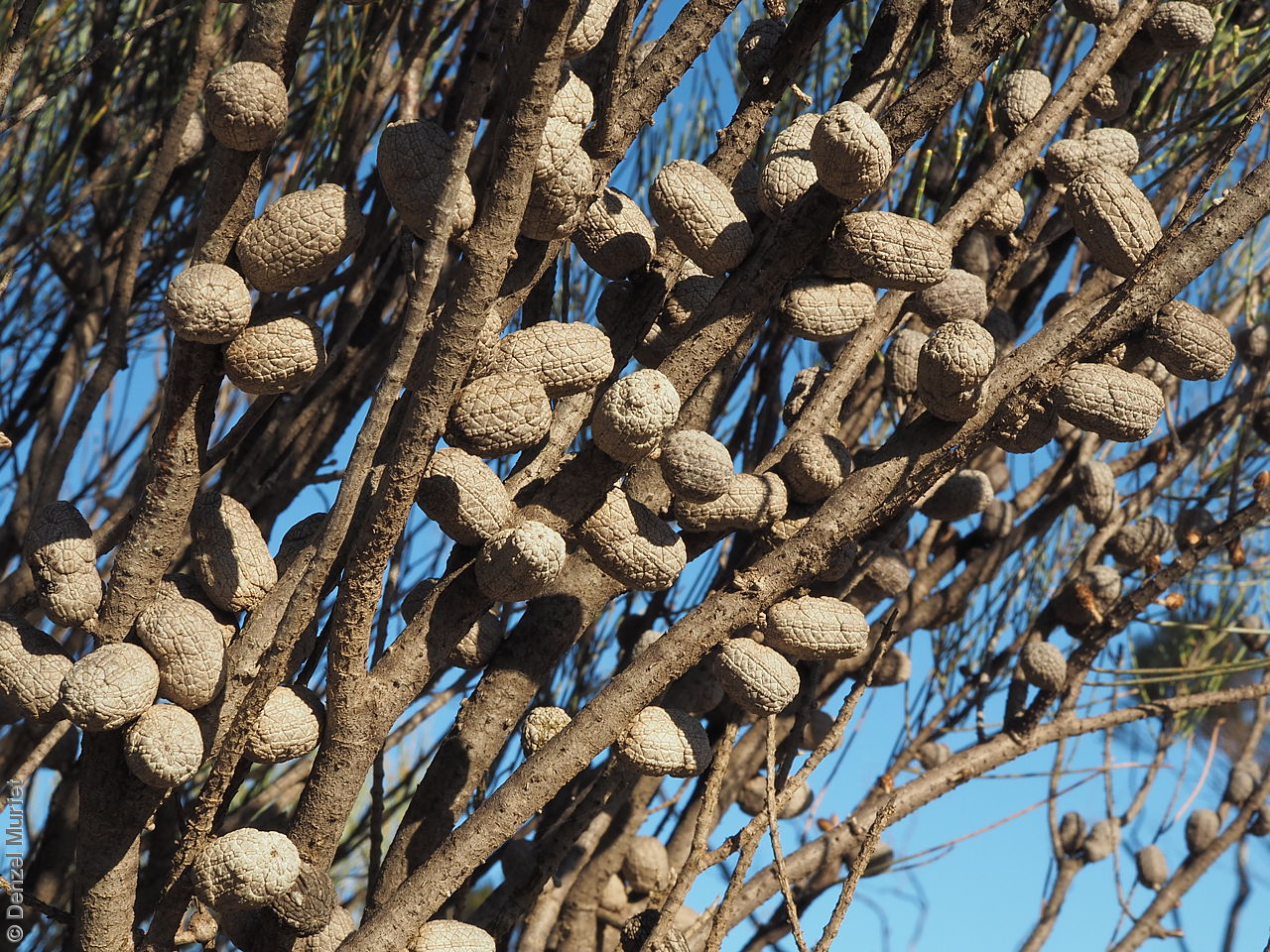
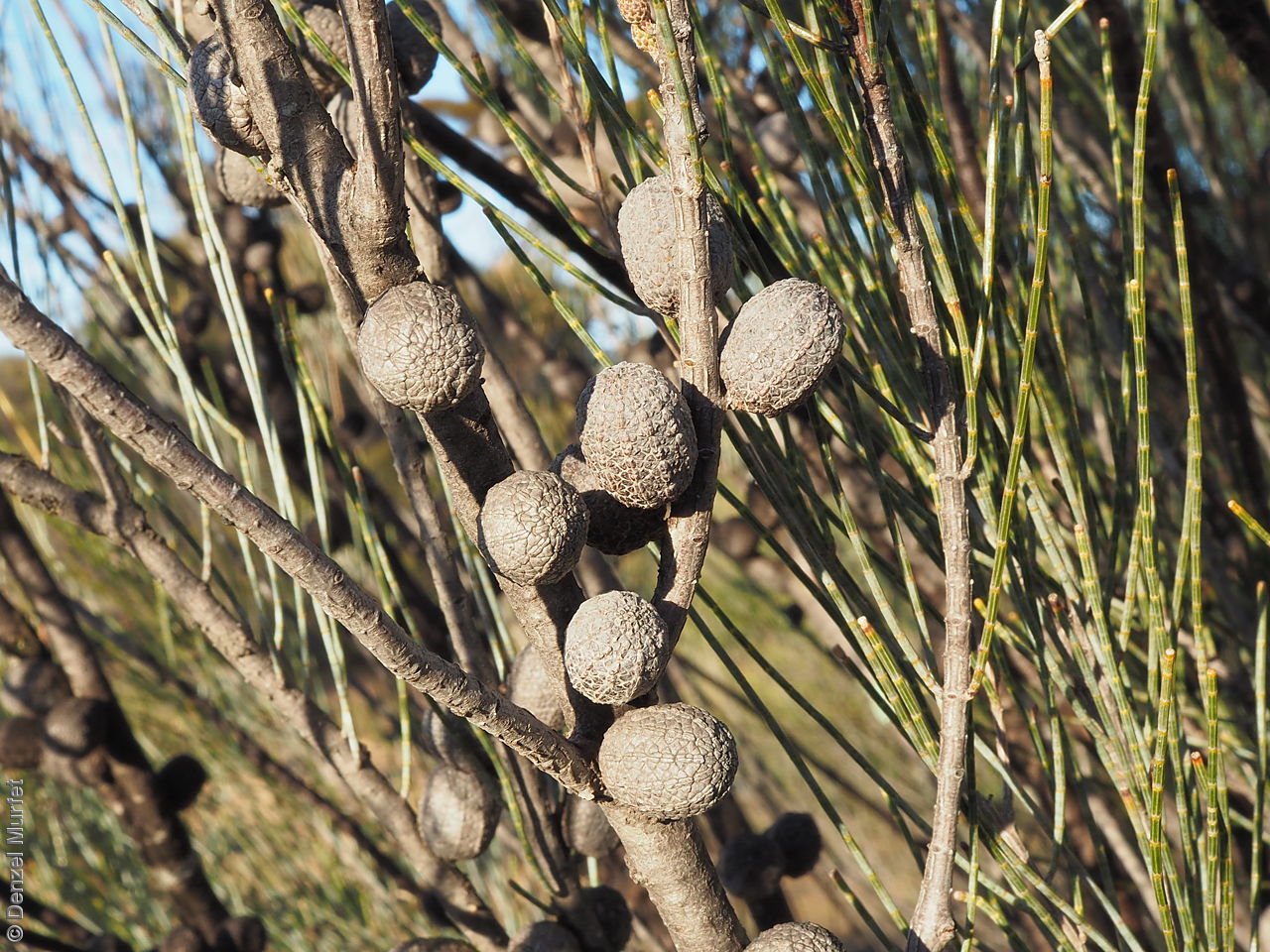
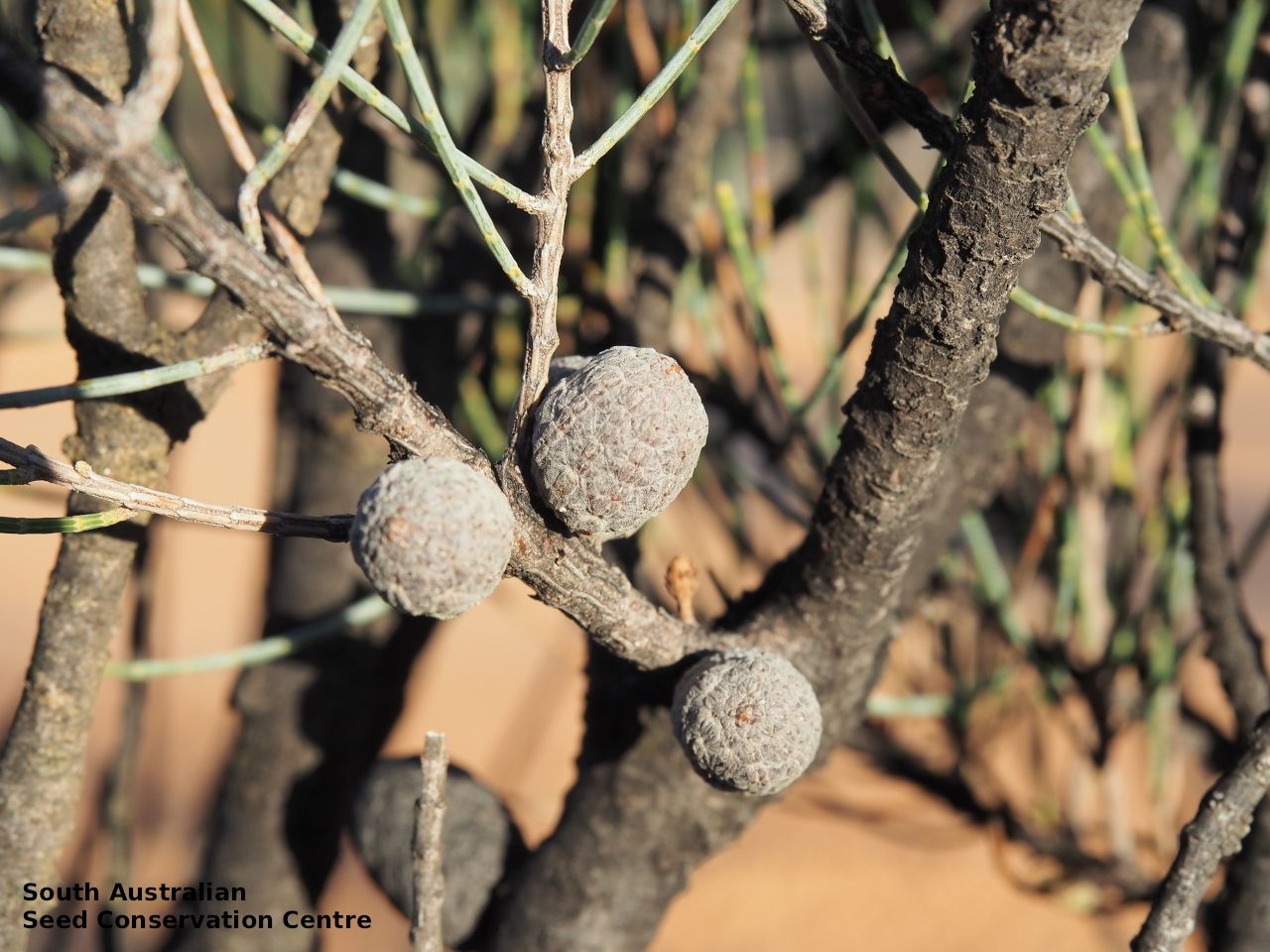
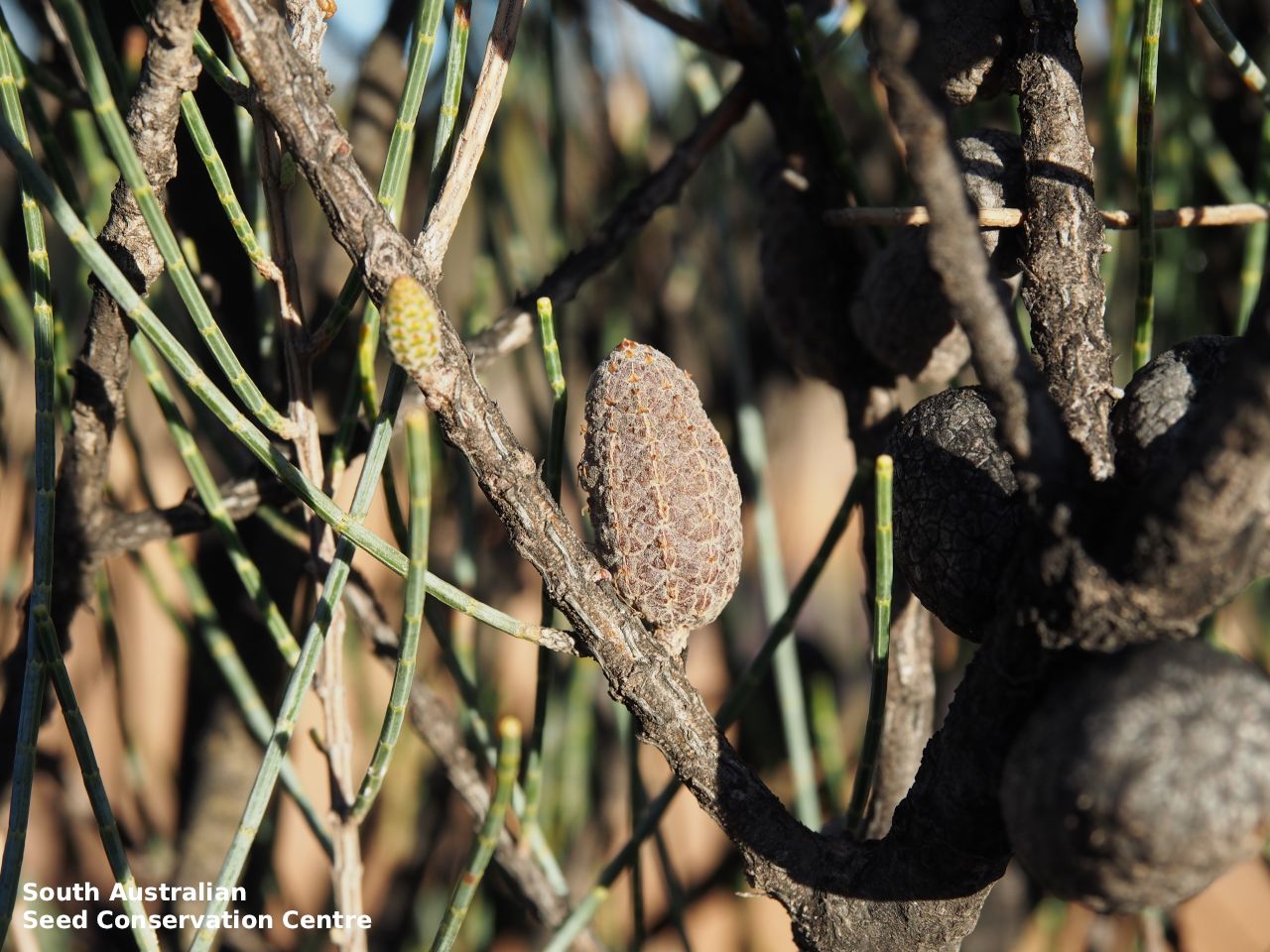
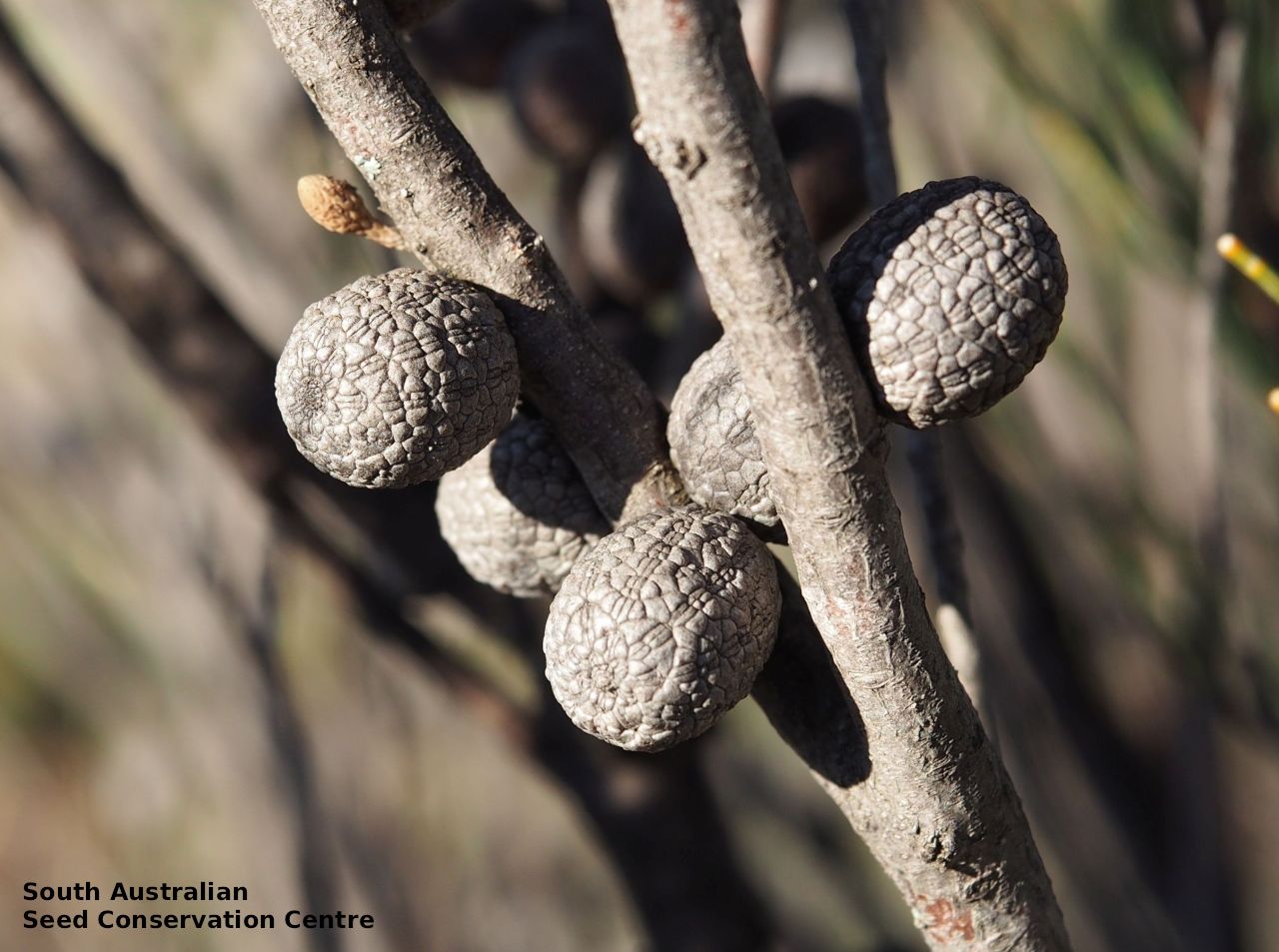
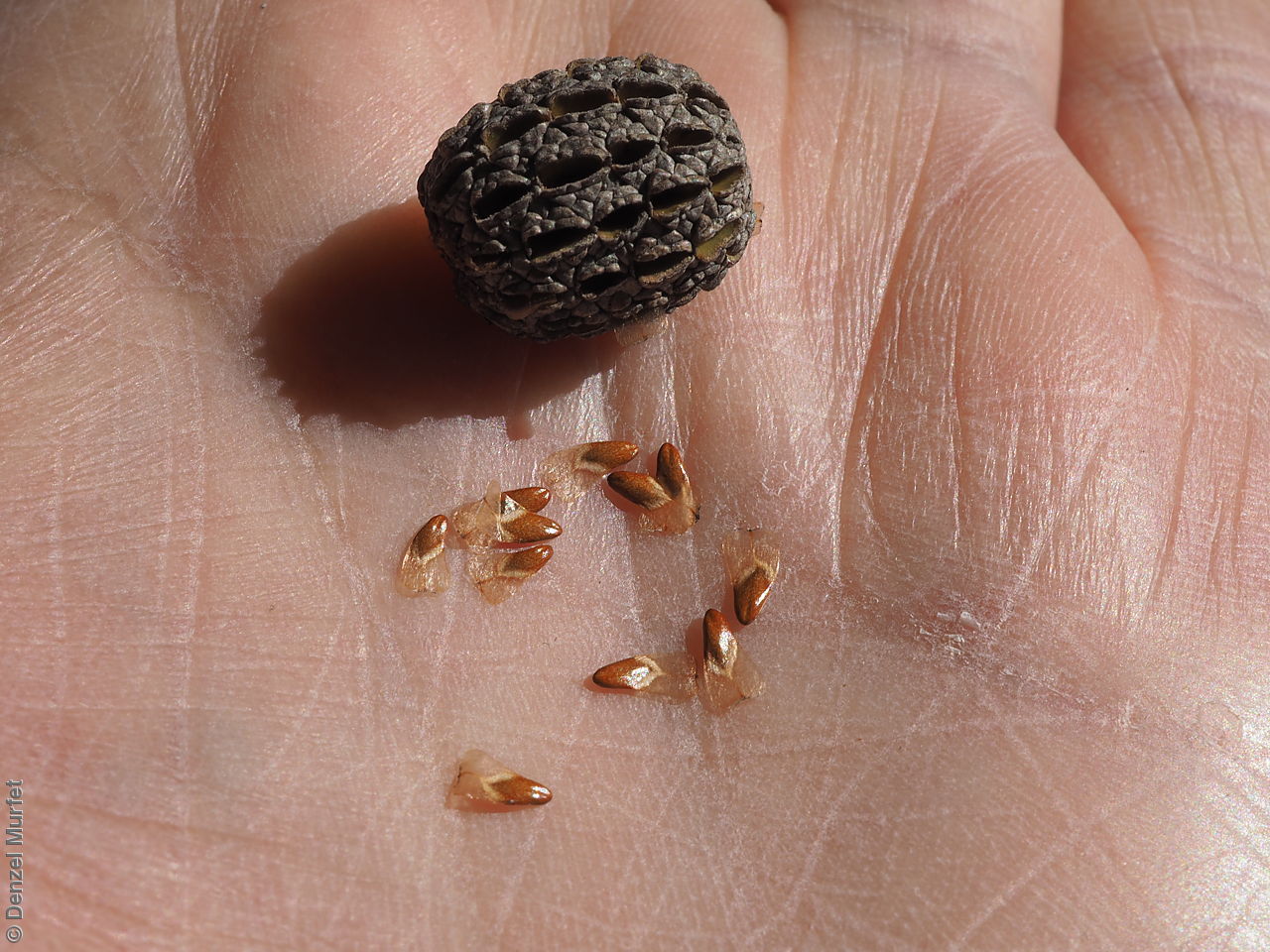



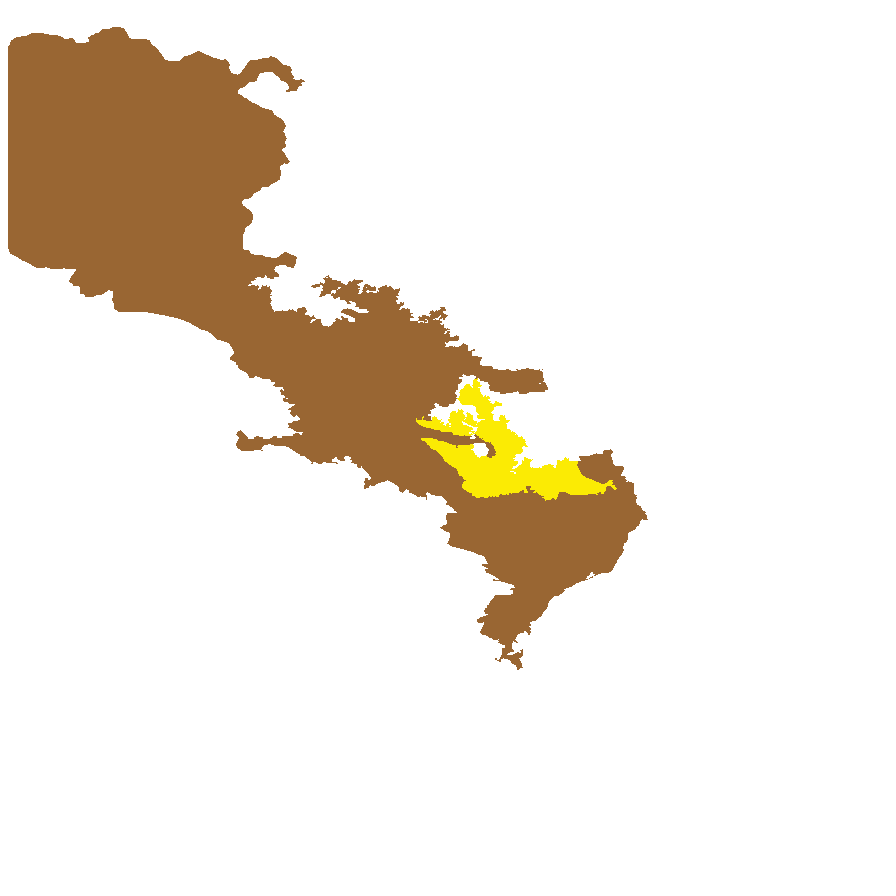
Botanical art
Prior names
Casuarina humilis
Casuarina helmsii
Common names
Smooth-cone Oak-bush
Helm's Oak-bush
Etymology
Allocasuarina from the Greek 'allos' meaning other or different, indicating the relationship with the genus Casuarina (first used by Rumphius (1743) in allusion to the supposed resemblance of the "foliage" of Casuarina equisetifolia to the plumage of the Cassowary, which is from the Malay 'kesuari', later being latinised as Casuarius). Helmsii may be named in honour of Richard Helms (1842-1914), zoologist, botanist and collector for the Australian Museum in Sydney.
Distribution and status
Found in the western part of South Australia, from the upper Eyre Peninsula to the north-west corner, growing on red sand and sandy clay. Also found in Western Australia. Native. Uncommon in South Australia. Common in Western Australia.
Herbarium regions: North Western, Gairdner-Torrens, Eyre Peninsula
NRM regions: Alinytjara Wilurara, Eyre Peninsula, South Australian Arid Lands
AVH map: SA distribution map (external link)
Plant description
Dioecious shrub to 3 m high with terete, smooth waxy stem. Article (stem segment) to 6 mm long and 0.9 mm diameter with 5 or 6 teeth (reduced leaves) around the end. Male spikes to 15 mm long, slender with 9-11 whorls per cm. Female flower red-brown. Fruits are large woody cylindrical cone to 3 cm long, with numerous valves. Seeds are orange-brown smooth and semi-flat seeds to 8 mm long with a papery wing at one end. Seed embryo type is investing.
Seed collection and propagation
Collect seeds between January and December. Cones can be collected anytime as mature cones remain on the female plant. Collect more mature cones that have closed valves, from the lower part of the stem. Place cones in a tray and leave to dry for 2-3 weeks. This will allow the valves to dry and open releasing the seeds. Place the dried cones in a bucket and shake gently to dislodge the seeds. Use a sieve to separate seeds from the unwanted material. Store the seeds with a desiccant such as dried silica beads or dry rice, in an air tight container in a cool and dry place. From one collection, the seed viability was low, at 50%. Seeds are non-dormant, viable seed should germinate readily.
| Location | No. of seeds (weight grams) | Number of plants | Date collected | Collection number Collection location | Date stored | % Viability | Storage temperature |
|---|---|---|---|---|---|---|---|
| BGA MSB | 10,107 (32.7 g) 10,107 (32.7 g) | 10 | 5-Dec-2003 | PJA58 North Western | 1-Sep-2004 | 50% | -18°C |
| BGA | 32,600 (29.78 g) | 50+ | 23-Aug-2017 | JRG597 Eyre Peninsula | 30-Jun-2018 | 90% | -18°C, -80°C |
Number of plants: This is the number of plants from which the seeds were collected.
Collection location: The Herbarium of South Australia's region name.
% Viability: Percentage of filled healthy seeds determined by a cut test or x-ray.